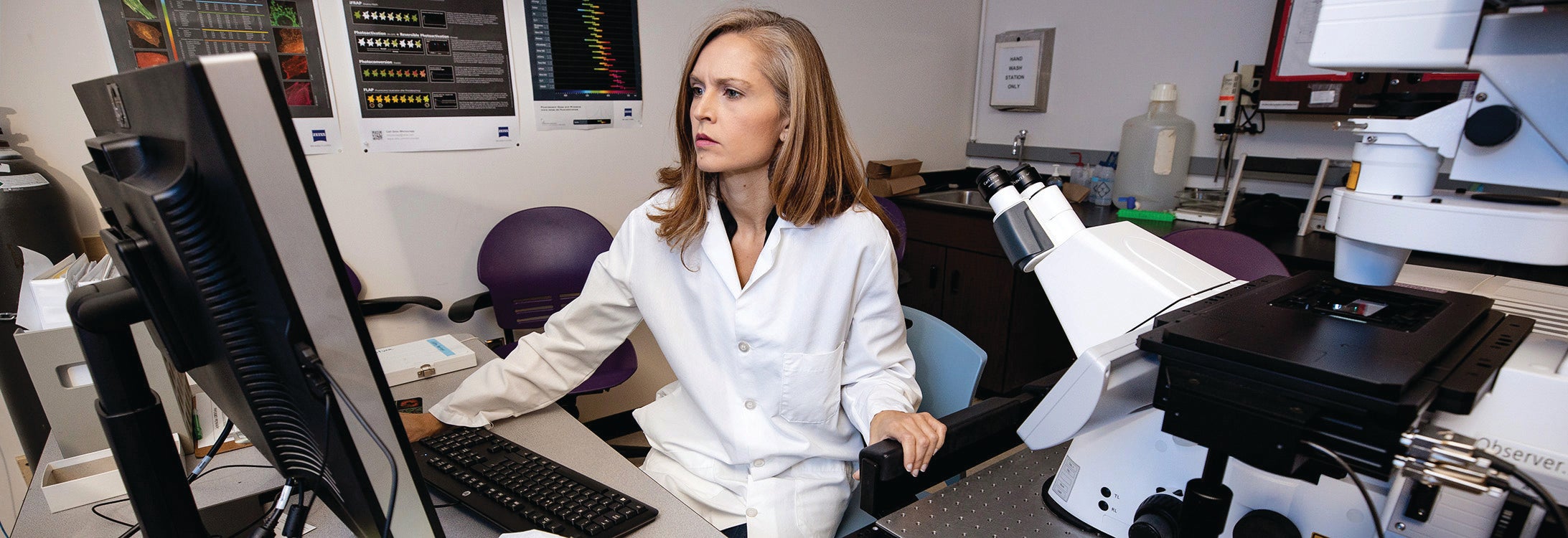‘Mini brains’ could help unravel autism spectrum disorders
When people ask Karen Litwa what she does for a living, her response is unique.
“I say that I’m a brain builder,” she says with a smile. Litwa, an assistant professor of anatomy and cell biology at ECU’s Brody School of Medicine, studies the mechanisms by which the brain cells form connections with one another to share information with each other.
In order to do that, her team grows mini brains in culture dishes.
“We can take a sample from a tissue bank, usually connective tissue from a skin biopsy, and make it into a pluripotent state, which just means it has the capacity to become any type of cell,” Litwa said. “Then using different growth factors, we make these into little spheres that contain the neurons that we’re interested in studying.”
The mini brains Litwa grows lack blood vessels and are only about 2 millimeters in diameter, but they are able to replicate the stages of human fetal brain development, specifically the outer cortex of the brain.
“We see a lot of the brain ventricles, which are the parts where the neurons are born, and we can also see the neuronal layers where the neurons form synapses with one another that allows them to exchange information with each other,” Litwa said. “That will eventually become the basis for learning, memory formation and other cognitive events, such as socialization.”
The mini brains Litwa’s team grew originated with tissue samples from people with neurodevelopmental disorders, such as autism spectrum disorders, so the team could explore how their brains develop differently from people who don’t have autism.
“If we know how the brain develops differently in autism spectrum disorders, we can eventually develop therapies for autism spectrum disorders,” she said.
